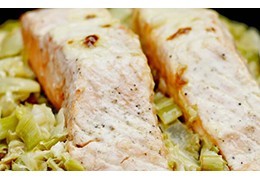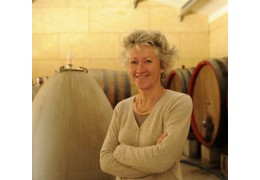Discover the differences between organic and biodynamic wine!
Everything you need to know about organic wine, from cluster to bottle!
The organic winesare organically grown wines. Previously, only the grapes were certified organic; for the past ten years or so, thanks to the European Union, winegrowers certify not only the vines but also the winemaking as organic.
The logo ABis gradually being replaced by the European logo, a green leaf!
The natural wines are sometimes confused with organic wines. Yet they have no official label or certifying body. They are in theory produced without sulfur or inputs in the vineyards
The specifications for organic winesproscribes the use of synthetic products in the vineyard: winegrowers can only use sulfur and copper to treat vine diseases. These products used for organic wines do not penetrate the fruit.
In winemaking, winemakers are limited in the use of sulfur doses, but have every freedom in the use of exogenous yeasts.
It takes minimum 3 years to obtain organic certification, during this time, the vineyard is in organic conversion, it complies with organic regulations and is monitored by the certification body, which ensures that it is correctly complying with the specifications.
Ecocertcertifies the majority of organic winemakers.
Biodynamic wine, a more demanding approach to respect for the environment!
Biodynamic farminghas been developed since the early 19th century. The idea is for cultivation to enter into maximum harmony with nature, creating as little negative impact as possible.
All dynamic wines are certified organic. But this approach also uses lunar cycles for vine pruning and harvesting, as well as plant- and mineral-based treatments to reinforce the vine's natural defenses. Preparations are made in a dynamizer!
(alt: biodynamic wine dynamizer)
The biodynamic approach emphasizes prevention over treatment.
On the winemaking side,no products are allowed for biodynamic wines, apart from sulfur in very low doses. Only the yeasts present on the grapes can be used for fermentation.
This type of winemaking requires a impeccable hygiene or else bad bacteria will develop and render the wine undrinkable.
The organic and biodynamic winesshare the same base, but biodynamic wines are stricter in their respect for the environment and even more natural in winemaking than organic wines.
Eager to sample a bottle?
Learn More
What are the differences in sulfur levels between organic and biodynamic wines?
- A conventional red wine can contain up to 150 mg/l total SO2 (sulfites). While a white or rosé wine can contain up to 200 mg/l SO2
- An organic red wine can contain up to 100 mg/l total SO2 (sulfites). Whereas an organic white or rosé wine can contain up to 150
- A biodynamic red wine may contain up to 60 mg/l total SO2 (sulfites).
How much copper is a winegrower allowed to use in these vineyards?
The maximum dose a winegrower can use is 30kg of copper smoothed over 5 years, or at 6kg/ha/year on average
How much of France's vineyards are farmed organically?
In 2019, organically managed vineyards (certified areas + areas in conversion) represent 14% of national vineyards, for 112,507 hectares (including 68,506 ha certified) and 8,039 farms.






